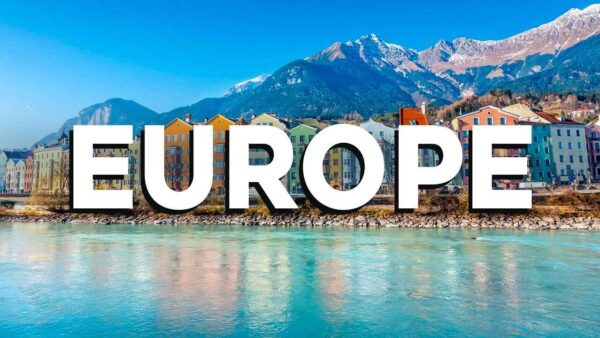When it comes to planning a trip to Iceland, timing is everything. This breathtaking Nordic island nation offers a myriad of natural wonders and experiences throughout the year, each season boasting its own unique charm. In this comprehensive guide, we delve into the best time to visit Iceland to ensure you make the most of your Icelandic adventure.
Summer: June to August
Summer is undoubtedly one of the most popular times to visit Iceland, and for good reason. With longer days and milder temperatures, this season provides the perfect conditions for exploring Iceland’s stunning landscapes and engaging in various outdoor activities.
Midnight Sun and Endless Days
One of the highlights of visiting Iceland in summer is experiencing the phenomenon known as the midnight sun. During this time, the sun barely sets, casting an ethereal glow over the landscape and allowing visitors to enjoy extended daylight hours for exploration. This unique natural occurrence is particularly enchanting in regions such as Reykjavik and the Golden Circle, where you can witness the sun lingering on the horizon well into the night.
Outdoor Adventures
Summer opens up a plethora of outdoor adventures for travelers, from hiking along rugged trails to glacier trekking and whale watching excursions. The warmer temperatures make it an ideal time to explore Iceland’s renowned national parks, including Thingvellir National Park and Vatnajökull National Park, where you can marvel at dramatic landscapes, cascading waterfalls, and pristine wilderness.
Festivals and Cultural Events
In addition to its natural wonders, summer in Iceland is also marked by a vibrant array of festivals and cultural events. From the lively Reykjavik Arts Festival to the traditional Viking Festival in Hafnarfjörður, there’s no shortage of opportunities to immerse yourself in Icelandic culture and heritage during this time of year.
Fall: September to November
As summer transitions into fall, Iceland undergoes a stunning transformation, with landscapes adorned in vibrant hues of gold, red, and orange. While the temperatures begin to cool, fall offers its own distinct allure for travelers seeking a more tranquil and introspective experience.
Fall Foliage and Northern Lights
One of the highlights of visiting Iceland in fall is witnessing the breathtaking display of fall foliage, as the countryside comes alive with a kaleidoscope of colors. Additionally, as the nights grow longer, fall marks the beginning of Northern Lights season, offering the chance to witness the mesmerizing dance of the aurora borealis across the Icelandic sky.
Hot Springs and Cozy Retreats
As the weather cools, fall provides the perfect opportunity to indulge in Iceland’s world-famous hot springs and geothermal spas. Whether you’re soaking in the mineral-rich waters of the Blue Lagoon or discovering hidden gems off the beaten path, there’s no better way to unwind and rejuvenate amidst Iceland’s stunning natural landscapes.
Harvest Festivals and Culinary Delights
Fall also brings an abundance of harvest festivals and culinary events celebrating Iceland’s rich culinary heritage. From traditional Icelandic cuisine to modern gastronomic delights, this season offers a tantalizing array of flavors and experiences for food enthusiasts to savor.
Winter: December to February
While winter months (October to February) in Iceland may conjure images of snow-covered landscapes and icy temperatures, this magical season holds a special allure for adventurous travelers seeking a truly unforgettable experience amidst the country’s pristine wilderness.
Snow-Covered Landscapes and Ice Caves
Winter transforms Iceland into a winter wonderland, with snow-capped mountains, frozen waterfalls, and shimmering ice caves awaiting discovery. From snowmobiling across vast glaciers to exploring ice caves beneath the surface, there’s no shortage of exhilarating adventures to embark on during this time of year.
Northern Lights and Stargazing
Winter also offers some of the best opportunities to witness the awe-inspiring spectacle of the Northern Lights dancing across the Arctic sky. Away from the city lights, Iceland’s remote locations provide optimal conditions for stargazing and celestial observations, offering a truly mesmerizing experience for astronomy enthusiasts and nature lovers alike.
Cozy Retreats and Icelandic Hospitality
Despite the chilly temperatures, winter in Iceland is synonymous with warmth and cozy retreats. Whether you’re curling up by a crackling fireplace in a rustic countryside cabin or enjoying the hygge ambiance of a boutique hotel in Reykjavik, Icelandic hospitality knows no bounds, ensuring a comfortable and memorable stay for visitors.
Spring: March to May
As winter fades away and Iceland begins to awaken from its snowy slumber, spring emerges as a captivating season of renewal and rebirth. With the promise of longer days and milder temperatures, spring offers a perfect balance of natural beauty and outdoor adventures.
Blooming Wildflowers and Waterfalls
Spring in Iceland is a time of vibrant transformation, as the countryside bursts into bloom with a kaleidoscope of wildflowers and lush greenery. From the iconic Seljalandsfoss and Skógafoss waterfalls to hidden gems off the beaten path, spring provides ample opportunities for scenic hikes and photography amidst Iceland’s breathtaking landscapes.
Puffins and Wildlife Watching
Spring also marks the return of migratory birds to Iceland’s coastal cliffs, including the beloved puffins that nest in colonies along the rugged shoreline. Wildlife enthusiasts can embark on birdwatching excursions to witness these charming seabirds in their natural habitat, along with other native species such as whales, seals, and arctic foxes.
Off-Season Adventures and Serenity
With fewer crowds and off-season rates, spring offers a serene and peaceful alternative for travelers looking to explore Iceland’s natural wonders away from the hustle and bustle of peak tourist season. Whether you’re hiking through pristine wilderness or soaking in a secluded hot spring, spring provides the perfect opportunity to connect with nature and savor the tranquility of Iceland’s pristine landscapes.



